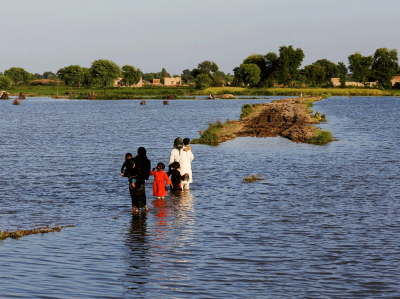In late October, flash floods devastated the Valencia region of eastern Spain. In some places, one year’s worth of rain fell in a few hours. At least 221 people have died and at least 5 are still missing.
It is Spain’s largest inundation since 1982, when torrents hit the same area as well as the Pyrenees mountain range. Those events prompted me to study floods: how they arise and how to mitigate their disastrous effects on human settlements.
Because climate change is likely to make flash floods more frequent and intense, it’s high time that governments and communities shore up their systems for forecasting, warning people about and responding to inundations.
Why it’s in rich nations’ interests to fund climate finance
The first step is to recognize that these are not unexpected events. The Mediterranean Basin is no stranger to heavy rainfall. Moisture-carrying air masses from the Atlantic Ocean and subtropics converge there. And water evaporates from the warm sea. All this humid air, forced to rise, is trapped by the surrounding mountains — causing thunderstorms and intense deluges in small areas. Over the centuries, frequent flash floods have scarred the landscape, carving many short, steep-sided, transient rivers.
But now, the Mediterranean Sea is becoming warmer — its surface reached a record daily median temperature of 28.9 °C in August. This generates extra moisture and intensifies rains. Climate change increased the rainfall recorded across Spain in the October floods (D. Faranda et al. Preprint at Zenodo https://doi.org/nsp9; 2024).
Yet buildings — including many with basements prone to inundation — are still being constructed close to torrents.
Preventive measures can help. After a major flood in 1957, for example, the Túria River, which flows through Valencia, was diverted to run through a concrete channel in the city’s outskirts. This partly contained the water and limited the number of deaths and amount of damage caused by October’s inundation. But such structural interventions are not sufficient. And they can put people at risk through the ‘levee effect’ — the construction of flood-protection infrastructure gives inhabitants a false sense of security and entices them to move into flood-prone areas.
Flash floods: why are more of them devastating the world’s driest regions?
‘Nature-based solutions’ are also crucial, and should be explored in the Valencia region. Allowing unpopulated areas to flood freely, for example, can alleviate pressure on urban zones. Flood waters can also be diverted into wetlands. The Brazilian city of Paraty reduced its flood risks by improving connections between water bodies in urban parks, ponds, rivers, floodplains and storage areas to contain and disperse excessive flows.
Storms and deluges are localized meteorological phenomena — they can be predicted, albeit with many uncertainties. Forecasts must improve. Radar and satellite observations, aided by artificial-intelligence tools, can help meteorologists to track the emergence of heavy rains.
For flood predictions, weather forecasts must be integrated with hydrological ones. This requires close collaboration between meteorological and hydrological agencies. For small basins with rapid run-off, such as those in Valencia, it is essential to monitor rainfall and water levels closely.
Alerts are crucial to minimize the number of fatalities and amount of damage. Flash floods are deadly because they rise so rapidly: people have, at best, a few hours to get to safe ground. And that’s where Valencia’s system failed.




